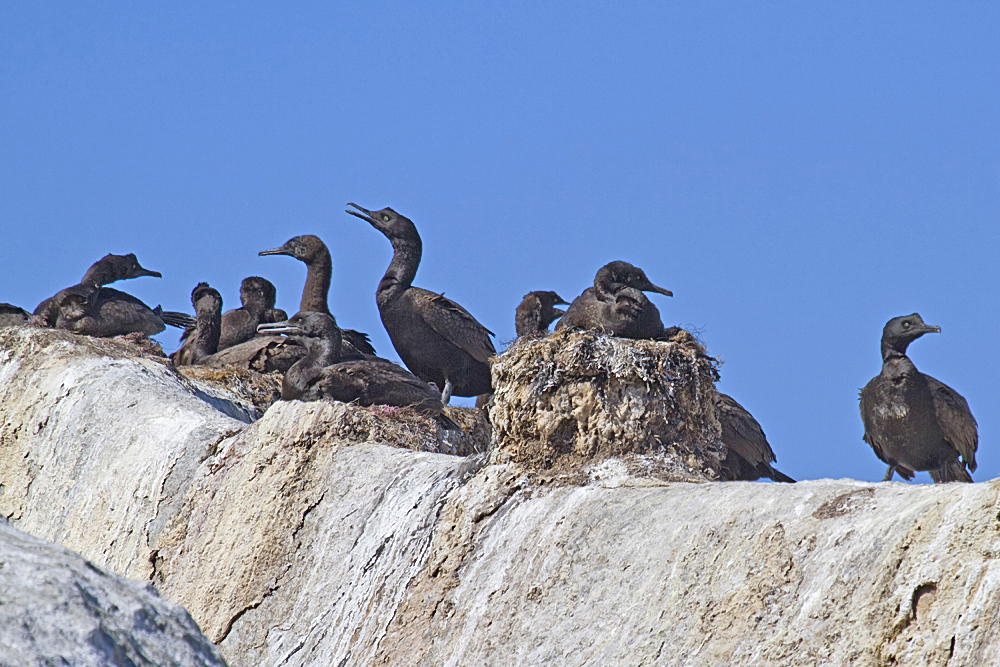Location
False Bay, Western Cape
South Africa
Metadata
Make Canon EOS 7D
Lens Canon EF 100-400 mm f/4.5-5.6L IS USM
at 640 mm
Exposure 1/1000 s, f/8, ISO 100
Image size 800 x 534 pixels
IOC Names
Deutsch Küstenscharbe Dutch Kustaalscholver
Italian Cormorano ripario Spanish Cormorán de Bajío
Comments
A greatly endangered cormorant, of which only 4,000 endemic to Namibia and the western coast of South Africa, are left in the wild. The distribution of this species broadly reflects that of Kelp beds. Kelp is a large brown seaweed which forms underwater forests, in which a large variety of animals live. Bank Cormorants prefer to forage among kelp beds at depths of 5-15m, preying mainly on klipfish and blennies or at depths of 31-40 m, preying on pelagic gobies. Substantial decrease in Bank Cormorants have been caused by human activities, by seals and by Kelp Gulls, which prey on eggs and chicks.
http://www.birdlife.org/datazone/speciesfactsheet.php?id=3672
|
| 04/12/2010 |
Bank Cormorant |
Jean-Michel PAULUS
|
